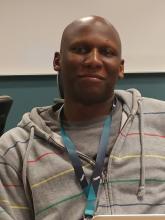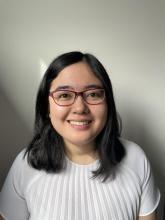Affinity Groups
There are no Affinity Groups associated with this topic. View All Affinity Groups.
Announcements
There are no announcements with this tag. View All Announcements.
Upcoming Events & Trainings
No events or trainings are currently scheduled.
Topics from Ask.CI
Knowledge Base Resources
| Title | Category | Tags | Skill Level |
|---|---|---|---|
| Gaussian 16 | Tool | gaussiancomputational-chemistry | Intermediate, Advanced |
Engagements

Exploring Small Metal Doped Magnesium Hydride Clusters for Hydrogen Storage Materials
Solid metal hydrides are an attractive candidates for hydrogen storage materials. Magnesium has the benefit of being inexpensive, abundant, and non-toxic. However, the application of magnesium hydrides is limited by the hydrogen sorption kinetics. Doping magnesium hydrides with transition metal atoms improves this downfall, but much is still unknown about the process or the best choice of dopant type and concentration.
In this position, the student will study magnesium hydride clusters doped with early transition metals (e.g., Ti and V) as model systems for real world hydrogen storage materials. Specifically, we will search each cluster's potential energy surface for local and global minima and explore the relationship of cluster size and dopant concentration on different properties. The results from this investigation will then be compared with related cluster systems.
The student will begin by performing a literature search for this system, which will allow the student to pick an appropriate level of theory to conduct this investigation. This level will be chosen by performing calculations on the MgM, MgH, and MH (M = Ti and V) diatomic species (and select other sizes based on the results of the literature search) and comparing the predictions with experimentally determined spectroscopic data (e.g., bond length, stretching frequency, etc.). The student will then perform theoretical chemistry calculations using the Gaussian 16 and NBO 7 programs on the EXPANSE cluster housed at the San Diego Supercomputing Center (SDSC) through ACCESS allocation CHE-130094. First, this student will generate candidate structures for each cluster size and composition using two global optimization procedures. One program utilizes the artificial bee colony algorithm, whereas the second basin hoping program is written and compiled in-house using Fortran code. Additional structures will be generated by hand from our prior knowledge. All candidate structures will then be further optimized by the student at the appropriate level determined at the start of the semester. Higher level (e.g., double hybrid density functional theory) calculations will also be performed as further confirmation of the predicted results. Various results will be visualized with the Avogadro, Gabedit, and Gaussview programs on local machines.



